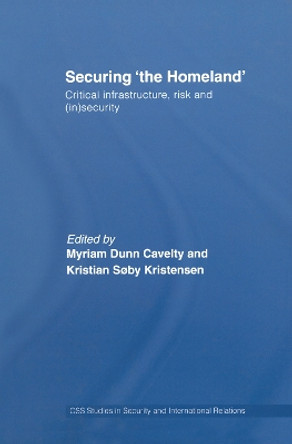Description
Critical Infrastructure: Homeland Security and Emergency Preparedness, Fifth Edition represents a continuation of research and recommendations from the past editions that spans nearly twenty years of focusing on critical infrastructure (CI) protection. Over that time, the operating, threat, and technical environments have changed drastically. The doctrines that have guided practitioners across various domains have also evolved due to changing demands. This is a natural result when doctrines collide and gradually evolve toward, and coalesce into, a singular understanding of an issue. Those who have practiced in this domain have seen these collisions in the past - an example being the convergence of physical security and cyber information and operational) technologies security.
It is with this backdrop and understanding of the domain that the authors not only describe the current state of affairs, but also provide a means through which researchers and participants - such as practitioners, students, industry stakeholders, owners, and operators in various government and private CI sectors - can look at trends and changes the in the domain that may not be apparent elsewhere.
The authors identify shifts in today's environment that move the thinking away from simply the robustness of systems to their adaptability and resilience. They outline design processes that, likewise, are evolving away from the simple adoption of best practices to risk-based management and even towards structures based on engineering-driven principles. These changes are not occurring at a unified pace and the differences can result in tensions between certain communities. However, the debate itself is indicative of the critical thinking that is beginning to take hold within each infrastructure domain.
Critical Infrastructure, Fifth Edition continues to critically examine the evolving importance of our critical infrastructure to our society - recognizing the underpinning value of cyber technology and how physical infrastructures and delivery models impact and affect people and society.
About the Author
Robert Radvanovsky is an active professional in the United States with over 40 years knowledge in security, risk management, business continuity, disaster recovery planning, and cyber. He has a vast background in engineering, business, and cyber, specifically on the topics of critical infrastructure protection and assurance. He has a special interest and tremendous knowledge in matters of critical infrastructure, along with industrial control systems (ICS) cybersecurity, and has published a number of articles and research papers regarding this topic. His activities include working for several professional accreditation and educational institutions on the topics of homeland security, critical infrastructure protection and assurance, and cyber security.
Allan McDougall is a seasoned asset protection and security practitioner, he has over 25 years between military, public sector, and private sector experience, in addition to being highly active within the research community. A former combat engineer, his approach to problem solving can be described as pragmatic. His public-sector experience has included service in the National Coordinator Security Policy and Projects at the Department of Fisheries and Oceans, senior positions within the Fleet Security organization of the Canadian Coast Guard, the senior inspector for ports and marine facilities, and as the manager and technical authority for physical security at the Canada Border Services Agency. He is currently actively involved in international efforts associated with the future of cyber security in the maritime domain and the evolving need for certification and accreditation.
Book Information
ISBN 9781032387574
Author Robert Radvanovsky
Format Hardback
Page Count 272
Imprint CRC Press
Publisher Taylor & Francis Ltd
Weight(grams) 453g






